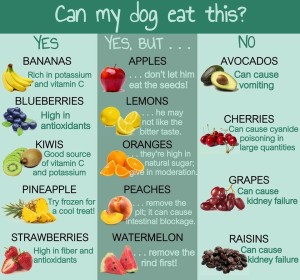While no one enjoys obtaining or even transporting the sample, the information from a good fecal exam can reveal a lot of information (good and bad) about your dog and his/her health.
Getting and Testing the Sample
Please remember, the fresher the better. While tempting, please understand that the poops in the back yard that are dried and hard are not useful. If at all possible, bring the sample in the day you get it. If your furbaby is a late night pooper then it is acceptable to refrigerate (NOT FREEZE) the sample and bring it to the vet in the morning. Although solid samples are best, diarrhea is important too so please make sure to get the entire pile. There are interesting things that hide in any form of poop that will help your doctor assess what the true problem is. They can include hair, toys, clothes, bones or other items that could be contributing to an intestinal problem. If you see a worm in your dog’s poop, please do everyone a favour and bring it along as well. And don’t hesitate to ask about your veterinarian going and ‘getting’ a sample with a swab if you couldn’t collect one, many have the capacity to do so.
There are a wide variety of tests available from direct smears to detailed cultures; however, the most common conducted in an annual exam is a fecal flotation. This is where the poop is placed in a special device and a solution is added. Since the solution is heavier than any of the items being tested, the good (really bad) stuff floats to the top leaving the useless parts at the bottom. What floats can include immature worms, worm eggs, protozoal parasites as well as other abnormal organisms that can then be placed on a microscope slide. Each of the potential offenders can then be identified by their size, shape and other features under microscopic examination.
Worms and Parasites and Eggs … Oh My!
Now what happens if your previous furbaby’s fecal sample is positive? There could be a variety of reasons and treatment options but ALWAYS get a repeat fecal examination to make sure the treatment was successful and your pet(s) didn’t re-infect themselves or each other. Below I will outline the most common calls you might get from your vet.
Hookworms, Roundworms and Whipworms. Each of these is a distinctly shaped worm that lives in the large or small intestine; and if left untreated can give your pup a potbelly sort of appearance. If your furbaby is on a monthly worm protectant such as Interceptor or Sentinel then he/she should be protected; however, if your pup does test positive for these critters then the maker of these products will pay for the treatment since they are guaranteed to prevent these worms if used appropriately. These worms are quite contagious and are spread by dog on dog contact and many can be passed along to the humans in your household.
Tapeworms. Unlike the above worms that are one piece, tapeworms are segmented and give off sticky egg packets that resemble grains of rice. They’ll most often be found in the hair underneath the tail. Tapeworms are not contagious but they come from ingesting fleas so addressing the tapeworm issue ahead of or simultaneous with dealing with the flea outbreak is imperative.
Giardia and Coccidia. These are single cell parasites (aka protozoal) that are generally caught via stagnant or stale water. Very often puppies will come from their mom’s with this diagnosis. Primarily parasites are limited to the small intestine and often cause diarrhea. Giardia is one of the most challenging items to catch on a fecal exam. Therefore, Giardia often goes undetected and all that alerts a pet owner is a positive Giardia ELISA (antibodies that remain after the Giardia itself has cleared) result. This tells the veterinarian that your furbaby probably had Giardia at some point but only the antibodies remain. Most veterinarians will treat a positive ELISA and a fecal exam should be repeated in about six weeks. In contrast, Coccidia strains exist in many species and a positive result for a bird or small mammal won’t affect your pup but may still cause a positive result (albeit one that doesn’t require treatment) in their fecal exam.
It’s Negative!
Hopefully, your pet’s fecal sample will be negative, meaning no abnormal organisms were detected. This means either your pet is free of parasites, or the parasites are not shedding into the stool in detectable numbers. If your vet feels your pet has signs of parasites in spite of a negative test, other tests may be recommended. And remember, if at any time you suspect your pet has been exposed to a worm or parasite, please pass the poop along to your local veterinarian.
